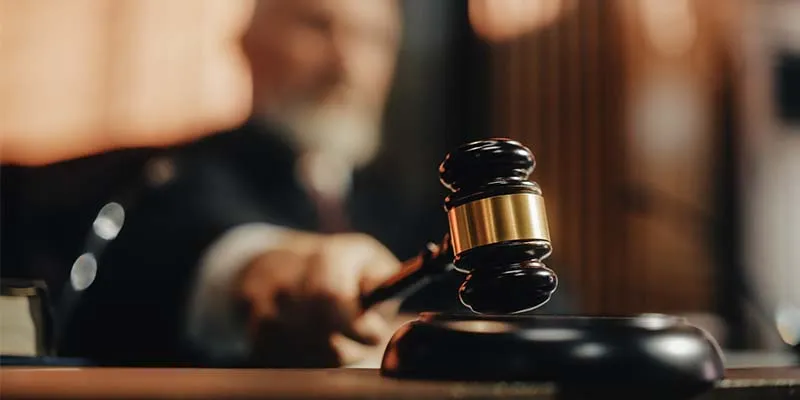What Are the Different Types of Protective Orders?
What protective orders cover and how they work in family law contexts.
- 5 min read
- family law

While all shared-parenting conflicts would be resolved in an ideal world, co-parents often encounter issues that spur strong emotions. In some cases, one parent may resort to more extreme reactions that involve physical or verbal attacks. These hostile efforts often make the other parent feel like their physical, mental, or emotional well-being is at risk.
When a person genuinely fears for their safety, it’s critical to take action to protect themselves. The stakes are even higher when children are involved, so parents in these situations must seek solutions that preserve the safety of their children. For co-parents in high-conflict situations who fear a potential or repeated instance of violence or danger, protective orders can be a helpful asset.

What is a protective order?
Protective orders are court-enforced actions that separate two parties by limiting or prohibiting physical, verbal, or written contact. While they are typically applied for by people in a familial or romantic relationship, protective orders can be pursued by anyone subjected to harassment or abuse by another person. These orders are often called “restraining orders” or “orders of protection”.
Depending on the nature of the conflict and the type of order that’s filed, standard provisions in a protective order may require that the person named in the order must:
- Make no contact with the person who filed the order
- Be limited to peaceful contact when necessary
- Stay a certain distance away (usually 100 yards)
- Move out of a shared residence
- Pay child support temporarily
- Surrender any firearms to local law enforcement
- Lose physical or legal custody temporarily
- Participate in regular drug testing or counseling
- Be limited to supervised visitation with children
While the term “restraining order” is often used interchangeably with “protective order”, each term may mean a different thing or refer to the same order depending on your state’s laws. In certain jurisdictions, protective orders apply to any two parties, while restraining orders are typically limited to spouses. Additionally, protective orders can address more issues, such as financial or emotional concerns, that restraining orders cannot. Other jurisdictions limit restraining orders to pre-existing cases and consider protective orders in situations that lack an active case.

How does the process work to get a protective order?
While the process may vary by state, protective orders can generally be acquired through the following steps:
- Gather evidence that supports your request for an order
- Complete and file a petition through your state court
- Receive a temporary order and court hearing date
- Send notice of this information to the other person
- Attend related hearings to pursue a long-term order
How long do protective orders last?
Protective orders can be either temporary or permanent, and the default length varies by state. Some states will automatically grant an order with no end date, while others can range from as short as 15 days to as long as a few years. In general, the courts issue protective orders that last around one year after hearings take place.
What happens if someone violates a protective order?
Significant consequences can occur when someone violates the terms of a protective order. Depending on the circumstances of the violation, the person who requested the order can pursue additional criminal or civil repercussions. In many states, those who violate protective orders are often arrested. Most first-time violations are considered a misdemeanor or contempt of court. In contrast, repeat or severe offenses can lead to felony charges or cancellation of bail.
Are protective orders limited to the state where they’re filed?
People who successfully file for restraining orders in their home state often worry about what happens to their order if they move to another state. While it’s important to note that state laws vary in terms of provisions for filing and being granted an order of protection, states are constitutionally mandated to acknowledge and abide by orders issued in different states.
The Full Faith & Credit Clause, part of Article IV of the U.S. Constitution, requires states to respect decisions made by other state courts. As a result, protective orders apply regardless of which state issued it in the first place. The threshold of enforcement, however, may vary by state. Some states do not require law enforcement to take action unless the protective order is violated.

What options are there for protective orders?
While the terminology varies by state, several variations of protective orders can be found across the U.S. Here are some of the most common types related to family law cases.
Temporary restraining order (TRO)
Similar to a preliminary injunction, a temporary restraining order (TRO) is a short-term protective order that lasts until hearings begin and goes into effect once an offender is notified of the filing. It can be issued once a request is filed and is intended to protect the person who filed for the order while they wait for more detailed court proceedings to start. As its name suggests, a TRO is temporary but can be extended or switched to another type of order.
Permanent restraining order (PRO)
Also called a final restraining order (FRO) in some states, a permanent restraining order (PRO) is implemented at the conclusion of a court case after a TRO is filed. While its name makes it seem unlimited, PROs are either effective for at least a few years or indefinitely. If they have a set duration, PROs can be extended in court if the person who initially filed it still feels like additional protection is necessary.
Depending on the context, specific versions of PROs correlate to varying areas of law. For example, civil law cases can involve protection orders for situations that involve civil harassment, workplace violence, and juvenile safety without the involvement of familial or romantic relationships. Two common variations of PROs in family law cases include domestic violence restraining orders (DVROs) and a child protection order (CPOs).
Emergency protective order (EPO)
While a TRO is issued by the court after a person files for it, an emergency protective order (EPO) is established in emergencies when someone needs more immediate intervention. They are often filed and issued by police or other law enforcement personnel, but some jurisdictions allow people to file for them as they would for TROs and PROs. EPOs are most commonly involved in cases where emergency personnel respond to instances that involve spousal or child abuse. In some states, an EPO is considered the same as a TRO; victims of abuse in these states can typically file for EPOs because they can be implemented much faster.
Whether you’re pursuing an initial protective order or requesting an extension, working with a local family law attorney can be an exceptional asset in seeking court-ordered protections. From understanding your state’s laws to helping you prepare and present evidence and arguments in court, attorneys can help share your needs with the courts and guide you to practical solutions that make you feel safer and reassured. For those concerned about how much an attorney costs, other forms of legal assistance offer low-cost or free alternatives depending on your case.